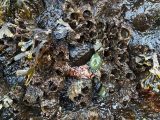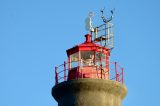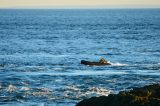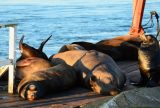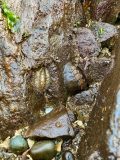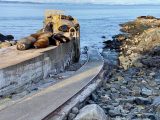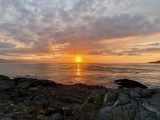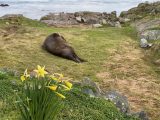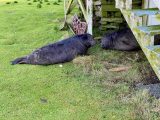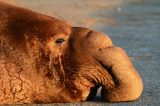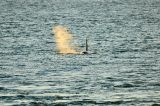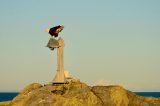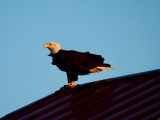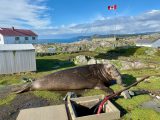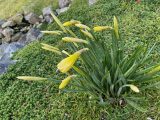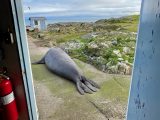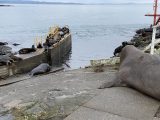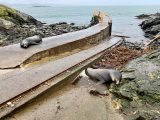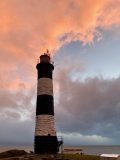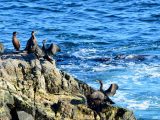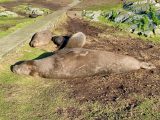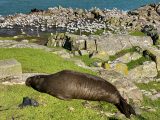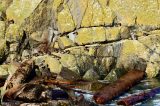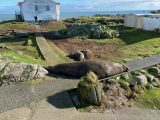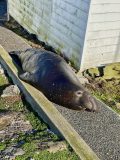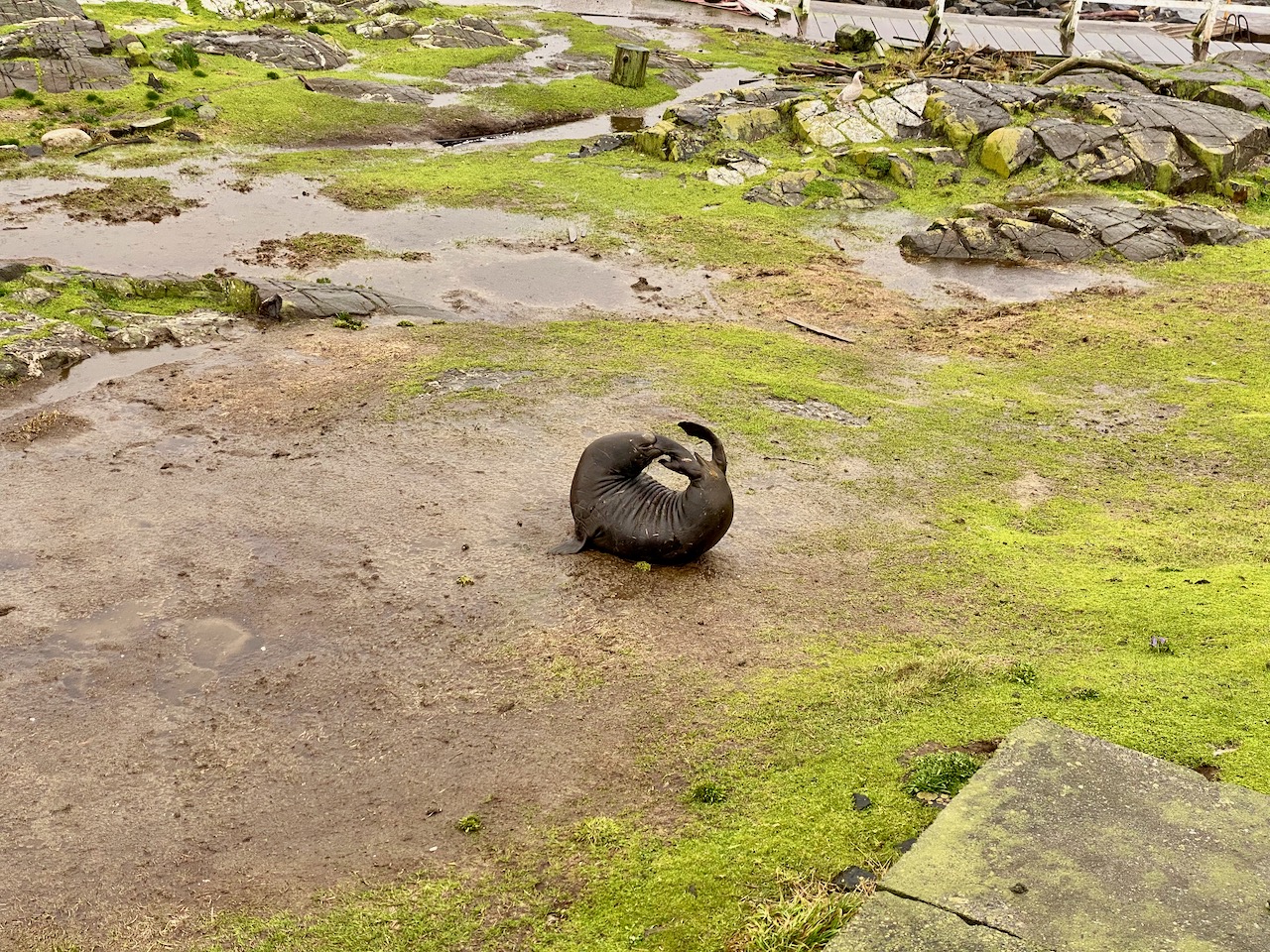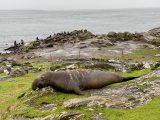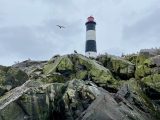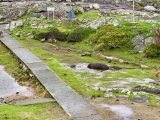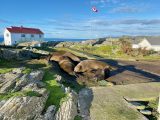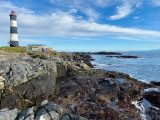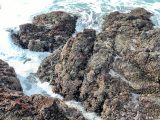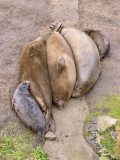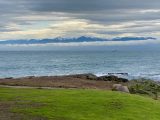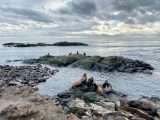Wind: yesterday 2-15 knots from E to N, today 3-10 knots from S to N to E
Sea State: yesterday and today rippled
Visibility: yesterday and today 15 NM
Sky: yesterday and today clear
Temperature: yesterday 5-7 °C, today 5-8 °C
Atmospheric CO2: 414.73 ppm (recorded by NOAA at Mauna Loa Observatory, Hawaii)
The past two days have been sunny, which means the animals and scenery are very photogenic.
There was lots of activity with the elephant seal harem today. Overnight, the third mother left the island, after nursing her pup for 24 days. Her pup is now a weaner, no longer getting milk from her mother. The three mothers whose pups survived all stayed for 24 days. The last female, who’s pup died 17 days ago, left late this morning. After the male mated with her, she was either trying to get away from him or was chased down the path and out into the water by the boat ramp. The alpha male left for about an hour, perhaps to get some food. He’s been on the island the longest of any of the elephant seals. He hasn’t eaten or left the island since before the first pup was born on December 29. That’s almost as long as I’ve been here without leaving, except I eat three meals a day. The female elephant seals will most likely return to Race Rocks exactly eleven months after they left, to give birth to another pup. Stay tuned to the Log next December and January for more pupping season drama.
Now that there are no adult female elephant seals left on Race Rocks, the alpha male’s role has changed from mating with the females, to protecting the three pups that remain. The alpha male is most likely father to all of them, as he was the alpha male last year as well.
Three beta male elephant seals are still on the island. One left for about 24 hours and returned this afternoon. When he slid up the ramp onto the island, he appeared to look around to see if any females were around. Then, he headed for the oldest pup and put his mouth around it. He didn’t appear to be trying to hurt it because no blood was drawn. The pup was screaming. The alpha male came over and scared away the beta male. For the afternoon and evening, the three pups were lying in the grass about 10 m away from each other. It will be interesting to see if the pups interact with each other, as they have in previous years.
Some other interesting sights were a sea otter, two black brant geese, and a very bright Venus visible in the western sky for a few hours after sunset for each of the past three nights.
There were no visitors to the island in the past two days. Four pleasure boats and three tour boats were seen in the ecological reserve.
See below for photos from the past two days:
-

-
The majority of the steller sea lions are hanging out on the south end of the island, on a place called south seal rocks. The sea lions in the foreground of the photo are california sea lions.
-
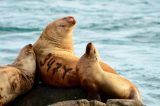
-
This male steller sea lion has been seen here for the past month. I checked with a marine mammal biometrician in Oregon, who reported that this sea lion was branded 347Y at Rogue Reef, Oregon on July 17, 2013, making him almost seven years old. The smaller sea lion by his side is a yearling, between one and two years old.
-
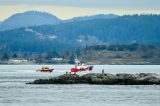
-
Local members of the Royal Canadian Marine Search and Rescue were doing training with the Coast Guard yesterday afternoon, just to the north of the ecological reserve. The buildings near the shoreline in the background are part of the William Head Federal Institution, a minimum-security federal correctional institution located at the mouth of Pedder Bay. The prison is one of Race Rocks’ closest neighbours, located 5 km to the north.
-
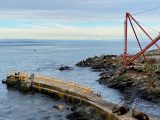
-
Mt. Baker, a 3,286 m active glaciated volcano, can be seen in the distance peaking above the clouds over northern Washington.
-

-
The colourful sky after sunset yesterday and one of the male elephant seals on the helicopter pad.
-
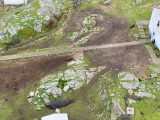
-
A bird’s eye view of the area worn down by the elephant seal harem for the past month and a half. The slide marks and flipper prints can be seen in the mud. The alpha male and the two female pups are visible. The oldest pup, a male, is out of the frame near the top of the photo.
-
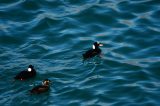
-
One female and two male surf scoters
-
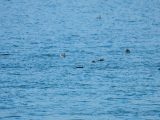
-
I saw a sea otter through the binoculars this afternoon. By the time I got the camera, I had lost track of the sea otter. Although I did see a pair of black brant geese. A sighting of them hasn’t been recorded at Race Rocks for almost five years. It’s hard to see them in the photo because they were quite far out by the North Rocks. They are small black and white geese with white bands around their necks.
-
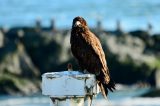
-
A juvenile bald eagle perches on top of the fog signal.
-
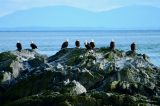
-
Nine adult bald eagles keep watch on the south islands.
-
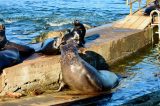
-
One of the beta male elephant seals takes a break from sliding out of the water at the boat ramp to converse with a california sea lion.
-

-
The beta male elephant seal let go of the male pup as the alpha male approached.
-
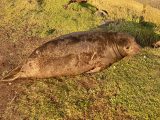
-
The older of the two female elephant seal pups lies in evening sun, with two little daisies poking out of the grass near her head.
-
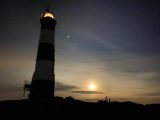
-
The moon rises tonight with some stars visible.


